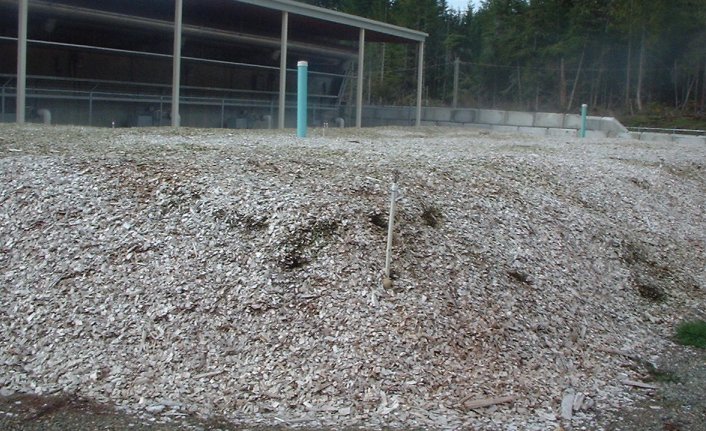Biofilter: Difference between revisions
(→Specific Applications: clarified) |
|||
| Line 11: | Line 11: | ||
==Specific Applications== | ==Specific Applications== | ||
*vented air from [[silage]], [[biogas]] facility, compost or animal facilities is pumped into an air biofilter | *vented air from [[silage]], [[biogas]] facility, compost or animal facilities is pumped into an air biofilter | ||
*exhaust from combustion may also be treated in this way. | *exhaust from combustion may also be treated in this way. Some juristictions may have strict emissions regulations that do not allow for open combustion. The filtered exhaust may then be clean enough to be used for CO2 enrichment in a greenhouse; examples are feed ([[duckweed]], [[azolla]], etc.) or biomass (bamboo, cattails, hemp, etc.) | ||
==Materials Needed (and Product Ecology)== | ==Materials Needed (and Product Ecology)== | ||
Revision as of 18:44, 11 March 2016
From Wikipedia: Biofiltration is a pollution control technique using living material to capture and biologically degrade pollutants. Common uses include:
- processing waste water
- capturing harmful chemicals or silt from surface runoff
- and microbiotic oxidation of contaminants in air.
Pioneering work at New Alchemy Institute
In the 1980s, New Alchemy Institute experimented with composting inside a greenhouse. The goal was to use the heat and capture the CO2 released from the composting process to heat up the greenhouse and enrich the air with CO2 for more rapid growth. This worked amazingly well but they noticed that the compost sometimes produced bad odors that made it unpleasant to work in the greenhouse. The problem was solved by venting air from the compost and piping it into soil under slight pressure. The soil microbes acted as a biofilter, trapping the smells. Potential airborne pathogens may also be trapped and eliminated in this way. For more information about the NAI Composting Greenhouse, read the report, published in 1986 (internal copy here)
Specific Applications
- vented air from silage, biogas facility, compost or animal facilities is pumped into an air biofilter
- exhaust from combustion may also be treated in this way. Some juristictions may have strict emissions regulations that do not allow for open combustion. The filtered exhaust may then be clean enough to be used for CO2 enrichment in a greenhouse; examples are feed (duckweed, azolla, etc.) or biomass (bamboo, cattails, hemp, etc.)
Materials Needed (and Product Ecology)
- wood chips, shredded wood for the matrix; possibly biochar; possibly shredded cattails
- fans to move air, ducting
- moisture control system (spray nozzles or similar)
- monitoring/management mechanism (either human or machine)
- ultimate disposal of material: for compost or combustion (after drying); good to locate biofilter in proximity to these other uses
- potential to use wastewater for moisture maintenance (aquaponics wastewater, greywater, etc.)
Videos (University of Minnessota)
1. "Biofilter Basics"
2. "Biofilters to Manage Odors and Air Emissions from Animal Feeding Operations" (University of Minnessota):
Links
- The soil biofilter is actually an older idea - see US Patent # 2,793,096 from 1957.
- Cornell University: "Odor Treatment - Biofiltration"
